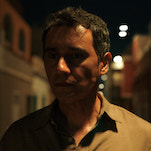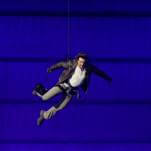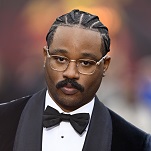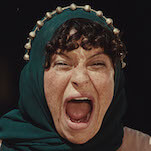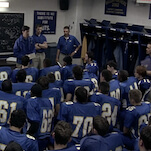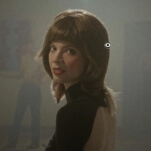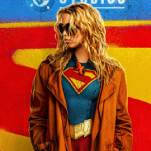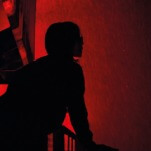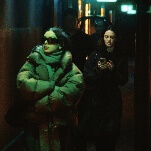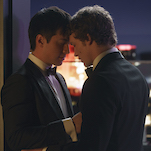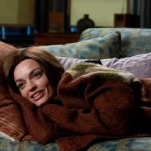That isn’t as snarkily reductive a synopsis as it probably sounds. Heuschling, who’s mostly called by the nickname Dédée, spends much of the movie in the altogether, and her breasts are a frequent topic of conversation—even the youngest Renoir, 14-year-old Claude (Thomas Doret from The Kid With A Bike), demands to see them at one point. Auguste rhapsodizes about the silkiness of her flesh in a way that’s creepy even coming from an elderly, arthritic genius. While the balance of power between artist and nude model can be a fascinating subject, as Jacques Rivette demonstrated (for four hours!) in La Belle Noiseuse, the dynamic here is disappointingly superficial. Auguste, in particular, comes across less like a person than a waxwork icon, with most of his dialogue written in the form of banal epigrams. “You can’t explain a painting. You have to feel it.” Oh. Okay. “The pain passes, Jean, but beauty remains.” Oh. Okay.
Thankfully, Jean seems considerably more human, even though Rottiers is distractingly handsome in the role, given the real article’s homeliness. (Weirdly, the film acknowledges that anyway: When Dédée, looking at Auguste’s paintings before meeting Jean, observes that he looks cute, Claude quickly replies “Not in person.”) His nascent interest in cinema isn’t beaten into the ground, either—even when he passes a soldier dressed exactly like Erich von Stroheim in Grand Illusion, it’s just a quick glimpse, not a light-bulb moment. All the same, Renoir is wispy to the point of being nebulous, a problem exacerbated by Bourdos’ penchant for observing characters in slow tracking shots intermittently obscured by gauzy foreground objects like curtains. Ace cinematographer Mark Ping Bing Lee (In The Mood For Love) does a superb job of creating an Impressionist look, especially when shooting exteriors, but the film’s loveliness is skin-deep.



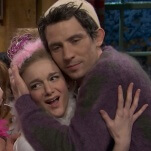






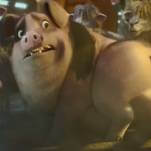
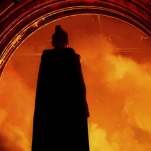

![HBO teases new Euphoria, Larry David, and much more in 2026 sizzle reel [Updated]](https://img.pastemagazine.com/wp-content/avuploads/2025/12/12100344/MixCollage-12-Dec-2025-09-56-AM-9137.jpg)


